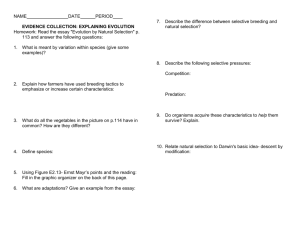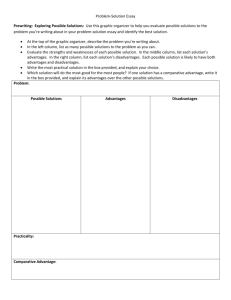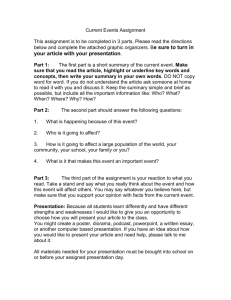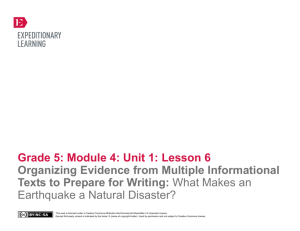Scaffolding Essay Writing about Reading
advertisement
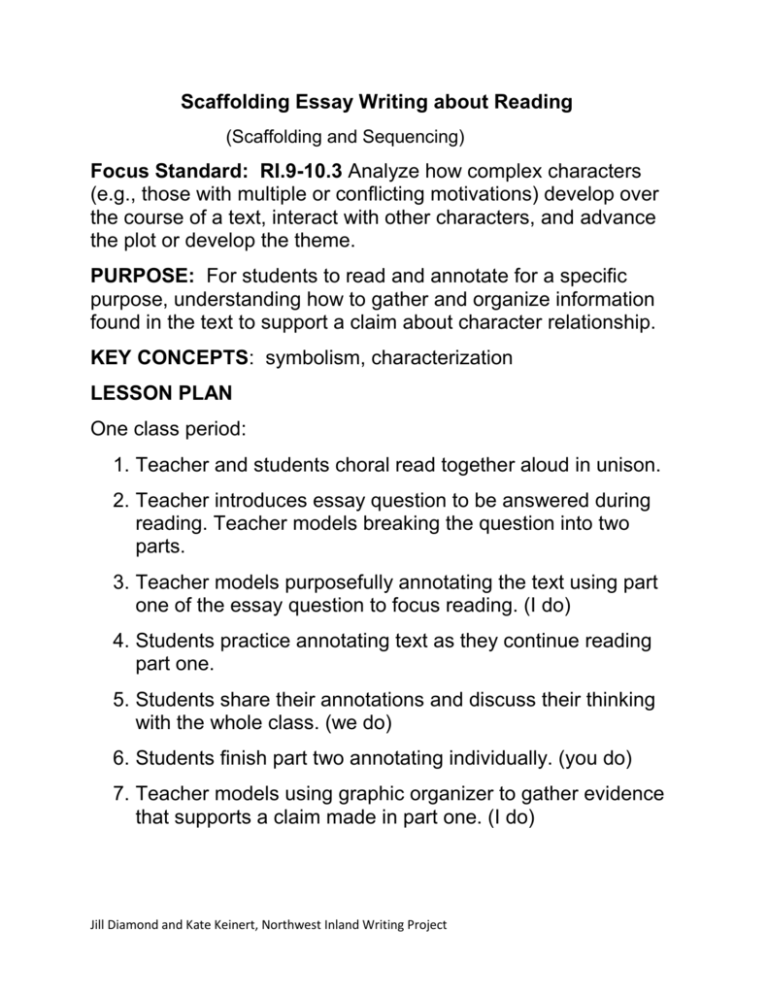
Scaffolding Essay Writing about Reading (Scaffolding and Sequencing) Focus Standard: RI.9-10.3 Analyze how complex characters (e.g., those with multiple or conflicting motivations) develop over the course of a text, interact with other characters, and advance the plot or develop the theme. PURPOSE: For students to read and annotate for a specific purpose, understanding how to gather and organize information found in the text to support a claim about character relationship. KEY CONCEPTS: symbolism, characterization LESSON PLAN One class period: 1. Teacher and students choral read together aloud in unison. 2. Teacher introduces essay question to be answered during reading. Teacher models breaking the question into two parts. 3. Teacher models purposefully annotating the text using part one of the essay question to focus reading. (I do) 4. Students practice annotating text as they continue reading part one. 5. Students share their annotations and discuss their thinking with the whole class. (we do) 6. Students finish part two annotating individually. (you do) 7. Teacher models using graphic organizer to gather evidence that supports a claim made in part one. (I do) Jill Diamond and Kate Keinert, Northwest Inland Writing Project 8. Students pair up to continue gathering evidence for part one to add to graphic organizer. Teacher facilitates a discussion of evidence. (we do) 9. Students work individually to gather evidence and add it to the graphic organizer for the part two of the essay question. (I do) 10. Teacher uses this individual work as formative assessment to drive instruction for the next class session. Continuation of lesson on another day 11. Teacher reviews previous individual practice by facilitating small group discussions of evidence found for part two. Allow students to add to their graphic organizer at this point. (we do) 12. Teacher models using the evidence captured on the graphic organizer to draft an essay answer to part one of the essay question. (I do) 13. Students work in groups to continue drafting, adding evidence for part one of the question. (we do) 14. Students share and revise drafts. (we do) 15. Students work individually to draft their evidence for part two of the essay. (I do) 16. Teacher uses this individual work as formative assessment to drive instruction for the next class session. 17. Review previous individual practice to part two by allowing groups of students to share and compare essay. (we do) 18. Allow students to revise based on this discussion before final submission. (I do) Materials: A Handful of Dates by El Tayeb Salih, Graphic Organizer Jill Diamond and Kate Keinert, Northwest Inland Writing Project
